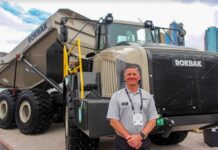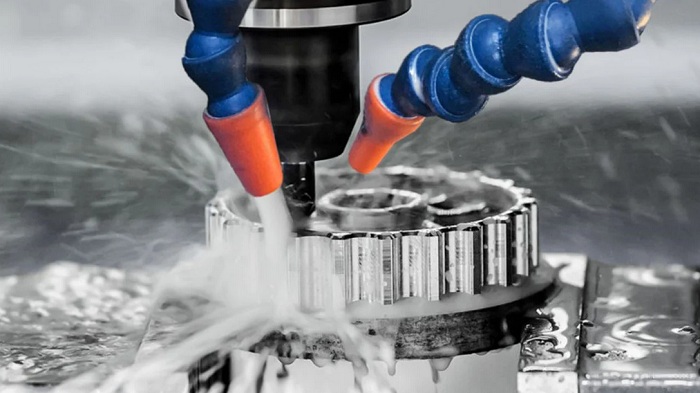Choosing between 3D printing and CNC Machining can be one of the most important decisions that designers in the building industry often have to make. Often it’s a call that needs to be based on many different variables, such as which process is better for your current project.
It’s probably safe to say that each technology has its supporters and detractors. While 3D printing is still relatively new, it’s also a fast-growing technology that’s incredibly cost-effective and easy to access. On the other hand, CNC machining is a proven technique that allows for greater accuracy and close to zero defects in the process of part creation. Furthermore, it’s important to note that 3D printing creates products by adding layers, while CNC starts with a block of material and subtracts what’s unnecessary to create the parts. Because of their contrasting nature, each technology has its own set of pros and cons.
Whether you’re considering using a CNC milling service, need to learn more about 3D printing, or simply can’t decide which one of the two works better for the building industry, this article will guide you through the necessary information. Read on and find out more.
3D Printing: Pros and Cons
In recent years, 3D printing, also known as additive manufacturing, has become popular with manufacturers. This technology is all about customization, speed, and cost-effectiveness. In the building industry, it can be used for manufacturing construction elements or entire buildings.
A 3D printer can print concrete, polymer, metal, or other materials with great precision. This way, it’s even possible to recreate constructions like this roller shutter Glasgow or sectional overhead doors. One of the most common types of 3D printers in the building industry is based on a robotic arm that moves back and forth while extruding concrete.
However, here are the main advantages and disadvantages of 3D printers you should be aware of:
Low Cost
One of the main benefits of 3D printing is that it’s incredibly cost-effective. In fact, today 3D printers are more affordable than ever, and with enough effort, you can find really attractive prices. Of course, everything depends on the scale of items you plan to print and the materials you’ll need to use. Know what you want to print and use that to set the expectations for your new printer. Look for high-quality features like a heated glass bed, a larger build volume, and a user-friendly interface.
Speed
In general, 3D printers can be both fast and slow when it comes to the way they work. It all depends on what kind of material and object you want to print. However, when you take into consideration the ability to create an object in real-time at any place, 3D printers can prove to be quite useful.
Limited Material Options
One of the most frequent complaints about 3D printing is that the available selection of raw materials is not exhaustive. That’s because not every plastic or metal can be temperature-controlled enough to be used in a 3D printer. What is more, some of the printable materials can’t be later recycled, leading to a lot of waste, especially in the building industry.
Restricted Build Size
Currently, 3D printers have small print chambers that restrict the size of parts that you can print. If you have a bigger project to handle, it will likely need to be printed in separate parts and joined together after everything is printed. Restricted build size can cause an increase in production costs. Larger parts will also need much more time to be printed.
CNC Machining: Pros and Cons
CNC is a well-known type of subtractive manufacturing, meaning it carves out needed components from large blocks of material. CNC Machining has been used in the manufacturing industry for decades now, as it was first introduced in the 1950s. CNC machining can produce parts that are durable and have precise dimensions. These machines are often used to create accurate down-to-scale models in today’s building industry.
Accuracy
CNC machining allows for close to zero-defect rates, which is great for companies that need parts with precise measurements and shapes. It offers a much higher accuracy compared to 3D printing. Additionally, CNC machines can consistently produce a product the same way each time, which is extremely important if you need plenty of the same looking and working parts.
Material options
CNC Machining works with a wide range of materials, including wood, metal, plastic, wood, acrylics, modeling foam, or even thermoplastics and wax. 3D printers work with a limited number of materials. This means that when using a CNC machine, you can work with just about anything you might need.
High Cost
CNC machining can be more costly than manually operated machines. While the reduction of these costs is slowly starting to show due to the increase in demand for CNC machines worldwide, purchasing and operating them still costs more than 3D printers.
Skills Loss
Working with CNC machines is very repetitive. Because there’s only a limited amount of training needed, many of the old skills once used to manually create parts slowly get lost among the CNC machines operators. This can cause difficulties if you happen to need handcrafted parts.
In Conclusion
As you can see, both of these technologies have their pros and cons, especially when it comes to using them in the building industry. Before deciding which one works better for your particular project, many factors need to be considered. In many instances, CNC machining works better and offers higher quality than 3D printing, but the latter is definitely winning when it comes to smaller-scale projects due to its cost-effectiveness.
If you’re still unsure which one to choose, consider your budget, the materials you want to use, and the detail level needed for your projects. Based on this information, you’ll be able to make an informed decision.




































